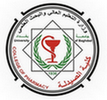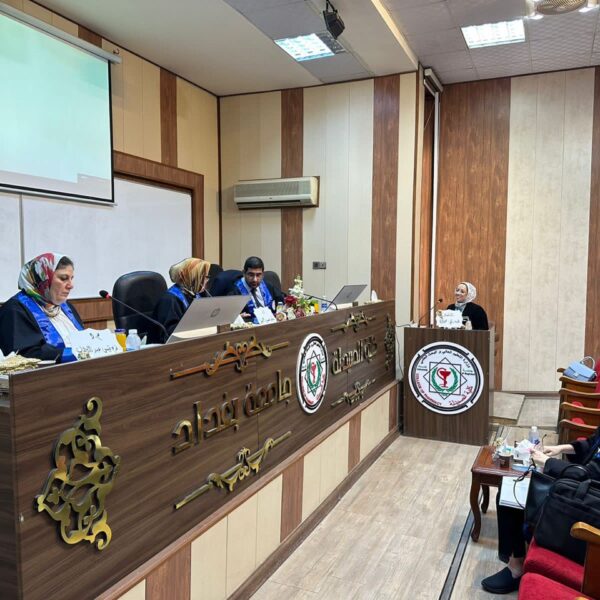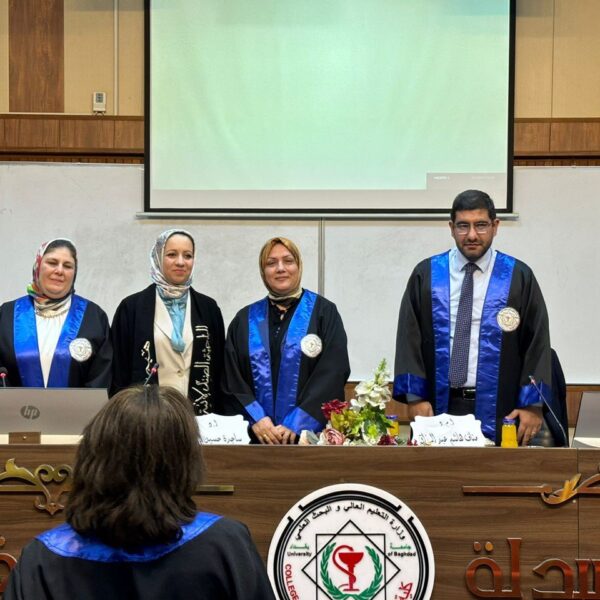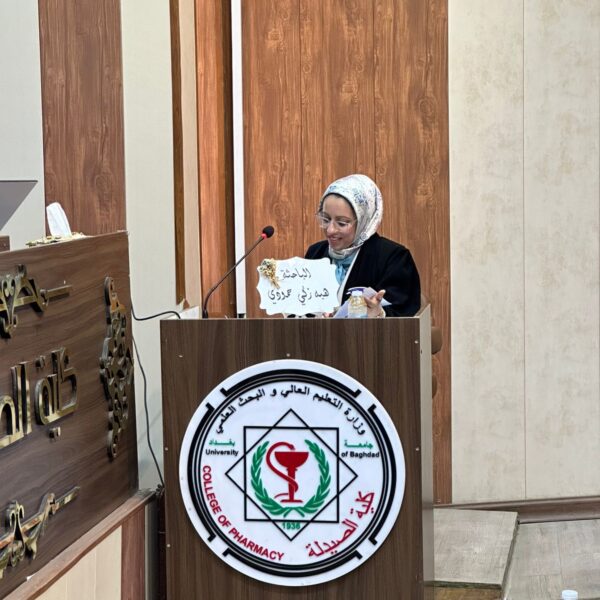The Faculty of Pharmacy discussed the Master’s Degree thesis, tagged “Possible Protective Effects of Daidzein on Ifosfamide-induced Neurotoxicity in Male Rats “By Hiba Zaki Hammoodi and the supervisor, Professor Dr. Nada Naji Al-Shawi, in the Department of Pharmacology and Toxicology on July 23, 2023. This study was designed to investigate the possible protective effect of daidzein against ifosfamide-induced neurotoxicity in male rats by evaluating some selected oxidants, antioxidants, and an apoptotic marker in rats’ brain tissue and inflammatory markers in rats’ serum, in addition to rats’ brain tissue histopathology.Results showed that the levels of malondialdehyde in brain tissue were significantly elevated (P<0.05), while levels of each of the reduced glutathione and the superoxide dismutase enzyme activity were significantly reduced (P<0.05) in Group III rats compared to such levels in the rats’ brain tissue of Group I. Furthermore, the brain tissue level of malondialdehyde was significantly reduced (P<0.05), while levels of antioxidant parameters were significantly elevated (P<0.05) in Group IV rats compared to each of these tissue levels in rats of Group III. Also, the data showed a significant elevation (P<0.05) in serum levels of each of the inflammatory markers (tumor necrosis factor-alpha, interleukin-6, and inducible nitric oxide synthase enzyme) and the anti-inflammatory marker (interleukin-10); also, there was a significant elevation (P<0.05) in the caspase-3 enzyme activity in the brain tissue of Group III compared to such levels in Group I male rats. Moreover, in Group IV, there was a significant reduction (P<0.05) in each of the serum levels of tumor necrosis factor-alpha, interleukin-6, inducible nitric oxide synthase, and interlekin-10 and the tissue level of caspase-3 compared to each of the previously mentioned levels in comparison with those in Group III. Additionally, the histopathology section of the brain tissue of Group IV rats showed that brain architecture with less hypercellularity was observed compared to those appearances in the brain tissue histopathology of Group III rats, which showed degenerative changes (neuronal degeneration) in the brain tissue cells. Overall, this study clearly showed that daidzein has a protective effect against ifosfamide-induced neurotoxicity in rats via improving some selected oxidative stress parameters, and it also has anti-inflammatory and anti-apoptotic effects and improves brain tissue histopathology.







